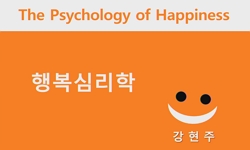최근 연구는 개인의 삶의 만족과 행복에 대해 사회적 자본이 미치는 긍정적 효과에 관한 결과를 제시한다. 본 연구의 주요 목표는 두 가지이다. 먼저 사회적 자본은 삶의 만족과 행복 사이의...
http://chineseinput.net/에서 pinyin(병음)방식으로 중국어를 변환할 수 있습니다.
변환된 중국어를 복사하여 사용하시면 됩니다.
- 中文 을 입력하시려면 zhongwen을 입력하시고 space를누르시면됩니다.
- 北京 을 입력하시려면 beijing을 입력하시고 space를 누르시면 됩니다.

Life Satisfaction as Mediator between Social Capital and Happiness in South Korea = Evidence from the World Values Survey
한글로보기https://www.riss.kr/link?id=A103230880
- 저자
- 발행기관
- 학술지명
- 권호사항
-
발행연도
2017
-
작성언어
English
-
주제어
Social Capital ; Happiness ; Life Satisfaction ; Community-level projects ; South Korea ; 사회적 자본 ; 행복 ; 삶의 만족 ; 커뮤니티 수준 프로젝트 ; 대한민국
-
등재정보
KCI등재
-
자료형태
학술저널
- 발행기관 URL
-
수록면
25-49(25쪽)
- DOI식별코드
- 제공처
-
0
상세조회 -
0
다운로드
부가정보
국문 초록 (Abstract)
최근 연구는 개인의 삶의 만족과 행복에 대해 사회적 자본이 미치는 긍정적 효과에 관한 결과를 제시한다. 본 연구의 주요 목표는 두 가지이다. 먼저 사회적 자본은 삶의 만족과 행복 사이의 관계에서 매개역할을 하는 것으로 가정함으로써 세 가지 구성 요소 사이의 관계를 명확히 하고자 한다. 둘째, 사회적 자본의 구성 요소가 한국인의 행복과 삶의 만족이 어떻게 관련되어 있는지 조사하고 함의를 도출하는 것이다. 연구 자료는 세계가치조사기관의 제6기(2010~2014년)의 대한민국 부분의 데이터를 분석하였다. Baron과Kenny (1986)가 제안한4단계 접근법에 따른 매개 효과를 검증하기 위해 회귀 분석을 실시하였다. 연구의 결과는 삶의 만족도가 부분적으로 사회적 자본과 행복 사이의 관계를 중재하는 것으로 나타났다. 변수들 사이에 단순상관관계가 성립되었다. 회귀분석 결과에 매개체를 포함시킴으로써 β 계수를 total β = .357에서totalβ = .142로 낮추었으며, 2개의 사회적 자본 변수(공동체 구성원, 타인의 규범)와 매개변수의 유의미한 결과로 부분매개 역할를 지지한다. 결과적으로 행복과 삶의 만족도가 이질적 요소라는 주장을 뒷받침하며, 사회적 자본을 구축하는 지역 사회 차원의 프로젝트가 한국인의 행복 증가를 위한 잠재적 수단이라는 것이다. 또한, 지역 사회 수준의 프로젝트는 일반적으로 시민들이 서로 긴밀한 관계를 갖게 하고, 지역의 비영리 단체와 자치단체장들에게 적극적 참여 할 것을 요구한다. 이를 통해 시민들은 네트워크를 구축하고 지역 사회 내에서 신뢰와 책임감을 높임으로써 삶의 만족도를 높일 수 있다.
다국어 초록 (Multilingual Abstract)
Recent literature provides evidence on the positive effect of social capital on both individual life satisfaction and happiness. The major goals of our study are twofold. Our study first seeks to clarify the relationship between the three constructs b...
Recent literature provides evidence on the positive effect of social capital on both individual life satisfaction and happiness. The major goals of our study are twofold. Our study first seeks to clarify the relationship between the three constructs by hypothesizing life satisfaction as playing a mediating role in the relationship between social capital and happiness. The second goal is to investigate how the different components of social capital relate to happiness and life satisfaction in South Korea, and to derive appropriate implications. We analyzed data from the South Korean portion of the 6<SUP>th</SUP> wave of the World Values Survey. We used regression analysis to test for mediation effects following the four-stage approach suggested by Baron and Kenny (1986). Our results indicated that life satisfaction partially mediates the relationship between social capital and happiness. A zero order relationship was established among the variables. The inclusion of the mediator lowered the β-coefficient from totalβ=.357 to totalβ =.142, with 2 social capital variables (association membership, others’ norms) as well as the mediator still being significant, supporting a finding of partial mediation. The results of our analysis support the assertion that happiness and life satisfaction are separate constructs and should not be treated as being homogeneous. Our study fills a gap in social capital research by providing new insights into the mechanism through which social capital impacts happiness in South Korea. An important implication that can be derived from our study is that community-level projects that build social capital are a potential means of increasing happiness in South Korea. Community-level projects often entail high levels of stakeholder participation, bringing citizens into close contact with one another, local non-profit organizations, and local government representatives. This allows them to build networks and fosters trust and a sense of responsibility in their own community, thus increasing their life satisfaction.
목차 (Table of Contents)
- Ⅰ. Introduction
- Ⅱ. Theoretical review
- Ⅲ. Empirical analysis
- Ⅳ. Results and discussion
- Ⅴ. Discussion and Conclusions
- Ⅰ. Introduction
- Ⅱ. Theoretical review
- Ⅲ. Empirical analysis
- Ⅳ. Results and discussion
- Ⅴ. Discussion and Conclusions
- References
- Abstract
동일학술지(권/호) 다른 논문
-
- 한국도시행정학회
- 임형백(Lim, Hyung Baek)
- 2017
- KCI등재
-
Fuzzy-ANP분석을 통한 아파트 가격형성요인 우선순위 분석
- 한국도시행정학회
- 최형근(Choi, Hyung Geun)
- 2017
- KCI등재
-
- 한국도시행정학회
- 정은주(Jung, Eun Ju)
- 2017
- KCI등재
-
서울 오피스 시장의 임대계약 사례를 이용한 렌트프리 기간의 결정요인 분석
- 한국도시행정학회
- 황병훈(Hwang, Byounghoon)
- 2017
- KCI등재





 DBpia
DBpia






